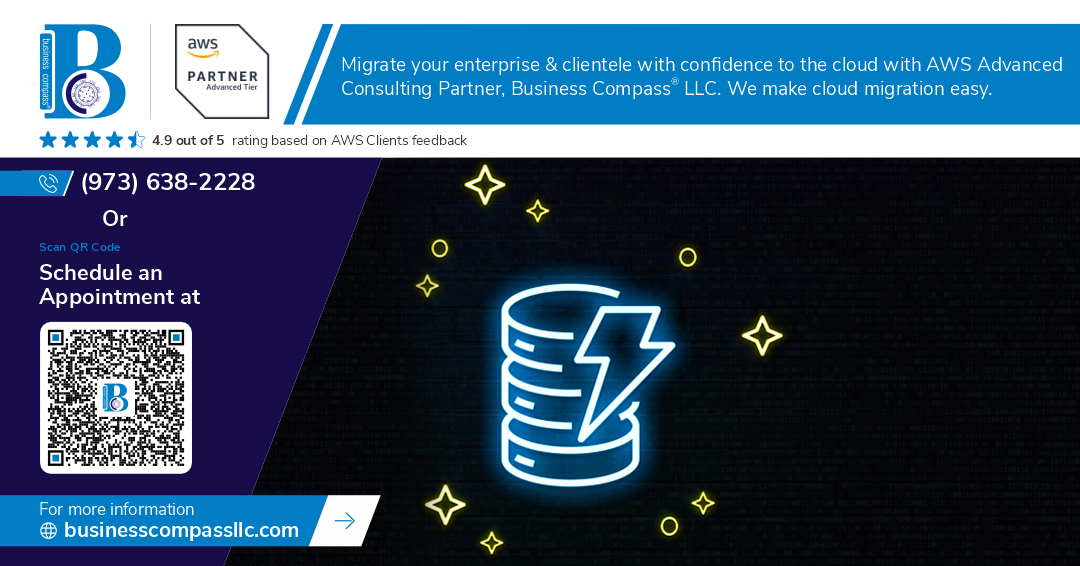Moving data from AWS S3 to DynamoDB doesn’t have to be a headache. This guide walks you through building a seamless AWS S3 to DynamoDB sync solution that keeps your data flowing smoothly between these two powerful services.
Who this is for: Developers, data engineers, and cloud architects who need to set up reliable data synchronization AWS processes without breaking the bank or losing sleep over complex configurations.
We’ll dive into Lambda data pipeline setup that handles the heavy lifting automatically. You’ll learn how to configure real-time data sync AWS solutions that respond instantly when new files land in your S3 buckets. Plus, we’ll cover performance optimization strategies that keep your AWS ETL pipeline running fast while controlling costs.
By the end, you’ll have a production-ready serverless data integration system that transforms and validates your data before it hits DynamoDB, complete with monitoring tools to catch issues before they become problems.
Understanding AWS Data Synchronization Architecture
Core components of S3 and DynamoDB integration
AWS S3 to DynamoDB sync relies on several key components that work together to create seamless data synchronization workflows. S3 serves as the storage layer for raw data files, while DynamoDB provides fast, scalable NoSQL database functionality. Lambda functions act as the processing bridge, triggered by S3 events to automatically transform and load data into DynamoDB tables. CloudWatch monitors the entire pipeline, while IAM roles secure access between services. EventBridge can orchestrate complex workflows, and Step Functions manage multi-step data processing tasks. This serverless data integration architecture eliminates infrastructure management while providing automatic scaling based on data volume.
Benefits of automated data sync workflows
Automated AWS data migration S3 DynamoDB workflows transform how organizations handle data processing by eliminating manual intervention and reducing human error. These serverless data integration solutions provide real-time responsiveness, automatically processing new files as they arrive in S3 buckets. Cost efficiency improves dramatically since you only pay for actual processing time rather than maintaining always-on infrastructure. Scalability becomes effortless as Lambda functions automatically scale to handle varying data loads, from single files to thousands of concurrent uploads. Data consistency improves through automated validation and error handling, while development teams can focus on business logic instead of infrastructure management. The AWS ETL pipeline approach also provides built-in retry mechanisms and dead letter queues for robust error recovery.
Common use cases for S3 to DynamoDB transfers
Real-time data sync AWS patterns appear frequently across various business scenarios. E-commerce platforms often sync product catalogs and inventory updates from S3 data lakes into DynamoDB for fast customer-facing queries. IoT applications process sensor data stored in S3, transforming it for real-time dashboards through DynamoDB data ingestion. Financial services use this pattern for fraud detection, syncing transaction logs from S3 into DynamoDB for millisecond-level lookups. Content management systems sync metadata from uploaded files in S3 to DynamoDB for quick search functionality. Gaming companies leverage this architecture to sync player statistics and leaderboards. Healthcare organizations process patient data from S3 into DynamoDB for fast clinical decision support systems, while media companies sync content metadata for personalized recommendation engines.
Setting Up Your AWS Environment for Data Sync
Configuring IAM roles and permissions
Setting up proper IAM roles forms the backbone of secure AWS S3 to DynamoDB sync operations. Create a dedicated IAM role for your Lambda functions with AmazonS3ReadOnlyAccess and AmazonDynamoDBFullAccess policies. Add custom policies restricting access to specific S3 buckets and DynamoDB tables. Enable CloudWatch Logs permissions for monitoring. Use the principle of least privilege by granting only essential permissions for your data synchronization AWS pipeline.
Creating S3 buckets with proper access controls
Your S3 bucket configuration directly impacts data pipeline security and performance. Enable versioning and server-side encryption using AWS KMS keys. Configure bucket policies that allow Lambda service access while blocking public read permissions. Set up lifecycle policies to manage costs by transitioning old data to cheaper storage classes. Enable CloudTrail logging for audit trails. Create separate buckets for raw data input and processed data output to maintain clear data flow separation.
Setting up DynamoDB tables with optimal schema design
DynamoDB schema design determines your serverless data integration success. Choose partition keys that distribute data evenly across multiple partitions to avoid hot spots. Design composite primary keys using both partition and sort keys for complex query patterns. Enable DynamoDB Streams for real-time data sync AWS capabilities. Configure appropriate read and write capacity units or use on-demand billing for unpredictable workloads. Plan your Global Secondary Indexes carefully to support diverse query requirements without creating unnecessary costs.
Installing necessary AWS CLI and SDK tools
Install AWS CLI version 2 for command-line operations and configure credentials using aws configure or IAM roles. Set up AWS SDK for your preferred programming language – Python’s boto3 is popular for Lambda data pipeline development. Install AWS SAM CLI for local testing and deployment of serverless applications. Configure named profiles for different environments (development, staging, production). Verify installations by testing basic S3 and DynamoDB operations before building your AWS ETL pipeline components.
Implementing Lambda-Based Data Sync Solutions
Creating Event-Driven Triggers from S3 Uploads
S3 event notifications automatically trigger Lambda functions when objects are uploaded, modified, or deleted in your bucket. Configure event notifications through the S3 console or CloudFormation to specify trigger conditions like file prefixes, suffixes, or specific bucket operations. The Lambda data pipeline activates instantly when matching events occur, enabling real-time data sync AWS processing. Set up multiple triggers for different file types or folders to create sophisticated routing logic for your AWS S3 to DynamoDB sync operations.
Writing Efficient Lambda Functions for Data Transformation
Lambda functions should process S3 objects efficiently by reading data in chunks and batching DynamoDB writes to maximize throughput. Use the boto3 SDK to parse JSON, CSV, or other file formats from S3, then transform data according to your DynamoDB schema requirements. Implement connection pooling and reuse DynamoDB clients across function invocations to reduce cold start latency. Your serverless data integration should leverage parallel processing for large files by splitting work across multiple Lambda invocations, ensuring optimal performance for data synchronization AWS workflows.
Handling Error Scenarios and Retry Mechanisms
Built-in retry logic protects your AWS ETL pipeline from transient failures by automatically retrying failed executions with exponential backoff. Configure dead letter queues (DLQ) to capture messages that fail after maximum retry attempts, allowing manual investigation of problematic records. Implement custom error handling within your Lambda functions to catch specific exceptions like DynamoDB throttling or S3 access errors. Use CloudWatch alarms to monitor error rates and automatically scale DynamoDB capacity when throttling occurs, maintaining reliable DynamoDB data ingestion even during traffic spikes.
Real-Time Data Pipeline Configuration
Setting up S3 event notifications
Amazon S3 event notifications serve as the foundation for real-time data synchronization pipelines. Configure bucket-level notifications to trigger Lambda functions when objects are created, modified, or deleted in your S3 buckets. Event types like s3:ObjectCreated:* and s3:ObjectRemoved:* capture all relevant data changes, enabling immediate processing. JSON event payloads contain essential metadata including bucket name, object key, size, and timestamps. Configure notifications through the AWS Console, CLI, or CloudFormation templates, ensuring proper IAM permissions allow S3 to invoke downstream services. Filter notifications by object prefixes or suffixes to process only relevant files, reducing unnecessary Lambda invocations and associated costs.
Configuring DynamoDB streams for bidirectional sync
DynamoDB Streams capture data modification events in your tables, creating a time-ordered sequence of item-level changes. Enable streams on your target DynamoDB tables with NEW_AND_OLD_IMAGES view type to capture complete before-and-after records for comprehensive AWS data synchronization. Stream records contain event names (INSERT, MODIFY, REMOVE), item data, and timestamps with 24-hour retention. Connect streams to Lambda triggers for automatic processing of database changes. Implement bidirectional sync by configuring streams on both source and destination tables, using conditional logic to prevent infinite loops. Stream shards automatically scale based on table write capacity, ensuring real-time data sync AWS performance matches your application demands.
Implementing AWS Kinesis for high-volume data processing
AWS Kinesis Data Streams handles massive data volumes that exceed Lambda’s processing capabilities for serverless data integration. Create streams with multiple shards to achieve parallel processing and higher throughput for your AWS ETL pipeline. Configure producers to send S3 event data or DynamoDB stream records to Kinesis, enabling batch processing and ordered delivery within partitions. Use Kinesis Consumer Library (KCL) or Lambda event source mappings to process stream records in batches. Set appropriate shard count based on expected write throughput (1,000 records/second per shard). Implement error handling with dead letter queues and configure retention periods up to 365 days for replay capabilities during pipeline failures.
Monitoring pipeline performance with CloudWatch
CloudWatch provides comprehensive monitoring for your Lambda data pipeline and DynamoDB data ingestion processes. Track key metrics including Lambda invocation count, duration, error rates, and concurrent executions to identify performance bottlenecks. Monitor DynamoDB consumed read/write capacity units, throttling events, and stream processing latency. Create custom metrics for business-specific KPIs like sync success rates and data freshness. Set up CloudWatch alarms for critical thresholds such as error rates exceeding 5% or processing delays beyond acceptable limits. Use CloudWatch Logs Insights to query and analyze log data from Lambda functions, enabling quick troubleshooting of cloud data synchronization issues. Configure SNS notifications for immediate alerts when pipeline failures occur.
Data Transformation and Validation Strategies
Converting S3 file formats to DynamoDB-compatible structures
Converting data from S3 files into DynamoDB-compatible JSON structures requires careful mapping of nested objects and arrays. Your Lambda function should handle common formats like CSV, JSON, and Parquet by parsing each record and transforming it into DynamoDB’s attribute value format. For CSV files, define column mappings that convert strings into appropriate DynamoDB data types (String, Number, Boolean). JSON files need flattening of nested structures since DynamoDB has limited nesting support. Use AWS SDK’s marshalling utilities to automatically convert JavaScript objects into DynamoDB format, ensuring proper type conversion for numbers, sets, and binary data.
Implementing data validation and cleansing rules
Data validation prevents corrupt records from entering your DynamoDB table and maintains data quality throughout your AWS ETL pipeline. Implement validation rules within your Lambda function to check for required fields, data type consistency, and business logic constraints. Create a validation schema that defines acceptable value ranges, string patterns using regex, and foreign key relationships. For cleansing, remove leading/trailing whitespace, standardize date formats, and handle null values appropriately. Log validation failures to CloudWatch for monitoring and create a dead letter queue to capture invalid records for manual review. Consider using AWS Glue DataBrew for complex transformation rules when processing large datasets.
Managing schema evolution and compatibility
Schema changes in your data sources can break your AWS S3 to DynamoDB sync pipeline if not handled properly. Design your transformation logic with flexibility by using dynamic field mapping that adapts to new columns or attributes. Implement versioning strategies that support backward compatibility when source schemas evolve. Create configuration files in S3 that define field mappings and transformation rules, allowing updates without code changes. Use DynamoDB’s flexible schema to your advantage by adding new attributes without affecting existing records. Monitor schema changes through CloudWatch metrics and set up alerts when unexpected field structures appear. Version your Lambda functions to enable rollback capabilities when schema updates cause issues in your serverless data integration workflow.
Optimizing Performance and Cost Efficiency
Batch processing techniques for large datasets
Processing massive datasets between S3 and DynamoDB requires smart batching strategies. Bundle multiple records into single Lambda invocations to reduce execution costs and improve throughput. Use S3 batch operations to process thousands of files simultaneously, while implementing parallel processing with Lambda’s concurrency controls. Configure batch sizes between 25-100 records for optimal DynamoDB write performance, balancing memory usage against processing speed.
Implementing intelligent data partitioning strategies
Smart partitioning prevents hot spots and distributes load evenly across DynamoDB partitions. Design composite partition keys that spread data across multiple partitions based on time periods, geographic regions, or hash values. Avoid sequential patterns that create bottlenecks. Pre-split large datasets in S3 using prefixes that align with your DynamoDB partition strategy, enabling parallel Lambda functions to process different data segments simultaneously without conflicts.
Leveraging DynamoDB auto-scaling features
DynamoDB auto-scaling automatically adjusts read and write capacity based on traffic patterns, eliminating manual capacity planning for AWS S3 to DynamoDB sync operations. Set target utilization between 70-80% to handle sudden spikes while maintaining cost efficiency. Configure separate scaling policies for read and write operations since sync workloads typically require higher write capacity. Monitor CloudWatch metrics to fine-tune scaling triggers and prevent throttling during peak data ingestion periods.
Minimizing AWS service costs through efficient resource usage
Cost optimization starts with right-sizing Lambda functions and choosing appropriate DynamoDB capacity modes. Use on-demand billing for unpredictable workloads and provisioned capacity for steady data synchronization patterns. Implement S3 lifecycle policies to automatically transition older data to cheaper storage classes. Reserve DynamoDB capacity for consistent workloads, leverage spot instances for batch processing, and compress data before transfer to reduce bandwidth costs and improve serverless data integration efficiency.
Monitoring and Troubleshooting Your Sync Pipeline
Setting up comprehensive logging and alerting
CloudWatch serves as your primary monitoring hub for AWS data synchronization pipelines. Configure detailed logging for Lambda functions, S3 bucket events, and DynamoDB operations to track every data movement. Set up CloudWatch alarms for key metrics like Lambda error rates, DynamoDB throttling, and S3 event processing delays. Use AWS X-Ray for distributed tracing across your serverless data integration components. Create custom metrics for monitoring data freshness and sync lag times. SNS notifications can alert your team immediately when sync failures occur, while CloudWatch dashboards provide real-time visibility into your AWS ETL pipeline performance.
Identifying and resolving common sync failures
Lambda timeout errors frequently plague AWS S3 to DynamoDB sync operations when processing large files or batches. Implement exponential backoff retry logic and break large datasets into smaller chunks. DynamoDB throttling issues arise from inadequate provisioned capacity or hot partition keys – monitor consumed capacity units and adjust auto-scaling policies accordingly. S3 event notification failures can cause missed sync triggers, so verify event configurations and implement dead letter queues for failed Lambda invocations. Data format mismatches between source and target require robust validation layers in your cloud data synchronization workflow.
Performance tuning for maximum throughput
Optimize Lambda concurrency settings to match your DynamoDB write capacity and avoid overwhelming downstream services. Use DynamoDB batch operations to reduce API calls and increase throughput for your real-time data sync AWS pipeline. Configure S3 transfer acceleration for faster data uploads from remote locations. Implement parallel processing by partitioning data across multiple Lambda functions based on file size or data characteristics. Monitor memory allocation for Lambda functions – insufficient memory can significantly slow down data streaming solutions. Consider using DynamoDB Streams for change data capture when building bidirectional sync capabilities.
Setting up data sync between S3 and DynamoDB doesn’t have to be overwhelming. By building a solid AWS environment foundation, leveraging Lambda functions for automated processing, and creating real-time pipelines with proper transformation rules, you can create a reliable data flow that keeps your systems perfectly aligned. The key is getting your monitoring and troubleshooting processes right from the start, so you catch issues before they become bigger problems.
Ready to transform how your data moves through AWS? Start with a small pilot project to test your sync pipeline, then scale up as you gain confidence. Your future self will thank you for investing the time upfront to build something robust and cost-effective. The seamless data sync you’ve been dreaming about is totally achievable – now you have the roadmap to make it happen.




















